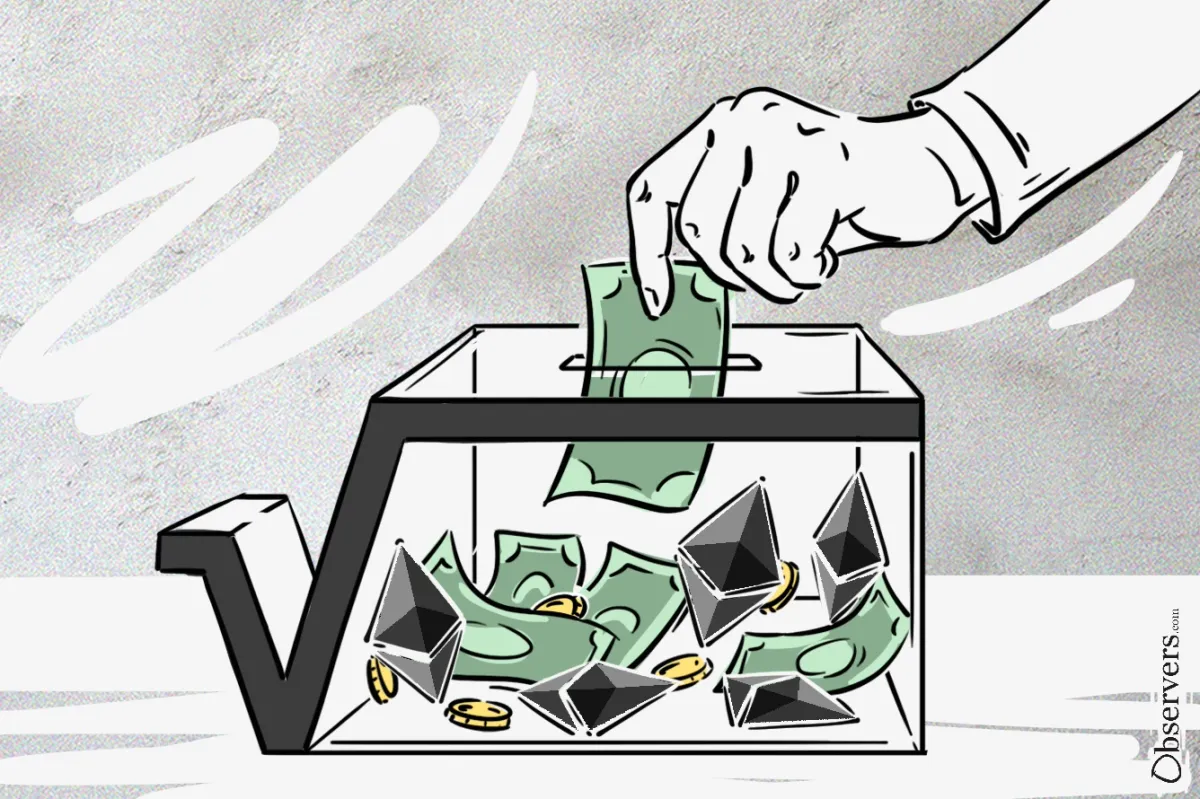
Quadratic Funding (QF) and Retroactive Funding (RF) have emerged as the current best mechanisms to support public goods and community-driven initiatives in the crypto space. Pioneered in 2018 by Vitalik Buterin, Ethereum's founder, QF uses a unique algorithm to match individual contributions with funds from a central pool, prioritizing projects with broader support over those with larger individual donations. RF, however, rewards projects based on their proven impact and value, incentivizing creators to focus on delivering meaningful results.
Quadratic Funding
Buterin co-wrote a Harvard research paper in 2018 introducing a new public goods funding model, Quadratic Funding (QF). Today, QF has become one of the go-to funding mechanisms for crypto donation platforms like Gitcoin and Giveth.
This unique approach to funding encourages broader participation and democratizes the allocation of resources, amplifying the impact of small donations and reducing the dominance of large contributors, or 'whales.' Traditional models often favor large donors or rely on centralized decision-making processes. In contrast, QF empowers communities to collectively determine funding priorities, aligning resource allocation more closely with public interest.
The inherent transparency of blockchain technology boosts accountability, as donors can track their contributions and see how funds are being used, fostering trust and encouraging continued participation.
Gitcoin has played a pivotal role in advancing the adoption of QF within the blockchain space. Since its inception in 2017, Gitcoin has been committed to funding open-source software projects, fostering innovation, and building a collaborative Web3 ecosystem. Gitcoin Grants, introduced in 2019, is the largest QF event in the Web3 space to this day and was the first funding program to use the QF model.
Gitcoin has played a pivotal role in the crypto ecosystem, funding over a thousand projects and raising nearly $60 million. This support has significantly accelerated the development of crucial infrastructure, decentralized applications (dApps), and other blockchain-based solutions. The platform's impact is evident in the success of projects like Uniswap, Yearn Finance, and Ethers.js, which have emerged as cornerstones of the DeFi landscape and the broader Ethereum ecosystem.
Giveth, established in 2016, was designed to facilitate zero-fee crypto donations to various projects, focusing primarily on public goods and community-driven initiatives. The platform has been growing steadily over the past year and has become a leader in the blockchain donations space after integrating QF in funding rounds in 2020.
"Rather than building business models, we're building economic models. Our vision is to help nonprofits change the way they're funded by evolving toward their own regenerative microeconomies using the innovative tools and funding mechanisms of Web3. Instead of resorting to an old model of extracting value from users with fees, we can leverage the "money legos" of Web3 to reward creation and innovation around public goods, build incredible community-driven networks, and maximize changemakers' impact on the ground," - The Giveth Philosophy.
Giveth embodies this philosophy not only in its fundraising approach but also in how it rewards donors through its GIVbacks program. In this program, donors receive GIV tokens for their contributions to verified projects. These tokens can be staked in the GIVpower mechanism, allowing donors to influence which projects are most visible and receive more funding. This gamified approach not only makes the donation process engaging but also helps to amplify the impact of contributions.
Giveth also supports smaller fundraising initiatives, such as Clr.fund. The project is currently seeking funding. Clr.fund (CLR stands for Capital-constrained Liberal Radicalism) is a permissionless QF protocol focusing on enhancing the public goods space in the Ethereum ecosystem. Clr.fund primarily aims to provide an inclusive and transparent funding environment.
Retroactive Funding
QF has changed how we support blockchain projects, but Retroactive Funding (RF) is another approach that is gaining attention amongst crypto donation platforms. According to its roadmap, Gitcoin plans to implement RF and other mechanisms over the next two years.
One of RF's key advantages is its ability to attract high-quality contributions from developers and innovators. Knowing that they will be rewarded based on their project's success, creators are motivated to focus on delivering impactful solutions rather than merely securing initial funding. This shift in focus can lead to more sustainable and valuable projects.
"The core principle behind the concept of retroactive public goods funding is simple: it's easier to agree on what was useful than what will be useful." Vitalik Buterin for Optimism
RF can also complement other models like QF. Once a project proves its worth through retroactive assessment, subsequent QF rounds can amplify its support. This approach leverages community contributions and matching funds to scale successful initiatives.
RF has been implemented in decentralized ecosystems, notably by Optimism through their Retroactive Public Goods Funding (RetroPGF) program. The Optimism Collective said in March it had committed 850 million OP tokens (over $1.57 billion) to RetroPGF, starting with its first round in 2023. This funding will reward past contributions to the ecosystem, focusing on onchain builders, OP Stack improvements, governance, and developer tools.
In parallel, DAO Drops's V1 pilot was a retroactive public goods funding experiment that began its first round in January 2023. The experiment scored Ethereum addresses based on past on-chain activities, granting these addresses voting power to decide fund allocation. The initiative aimed to decentralize the process of public goods funding by leveraging the knowledge and experience of active Ethereum users. PairDrop by DAO Drops is a recent funding mechanism designed to "intelligently" allocate funds while avoiding cognitive overload and favoritism. It uses a randomized selection process where voters compare pairs of funding targets and select the more deserving option.
Quadratic Funding and Retroactive Funding are gaining traction in the blockchain space, aiming to democratize resource allocation and reward impactful projects. As the community refines these models, we may see more equitable and effective funding distribution. Their evolution and impact on the blockchain space will be worth watching, as will the potential emergence of new funding mechanisms to address ongoing challenges in the crypto ecosystem.

